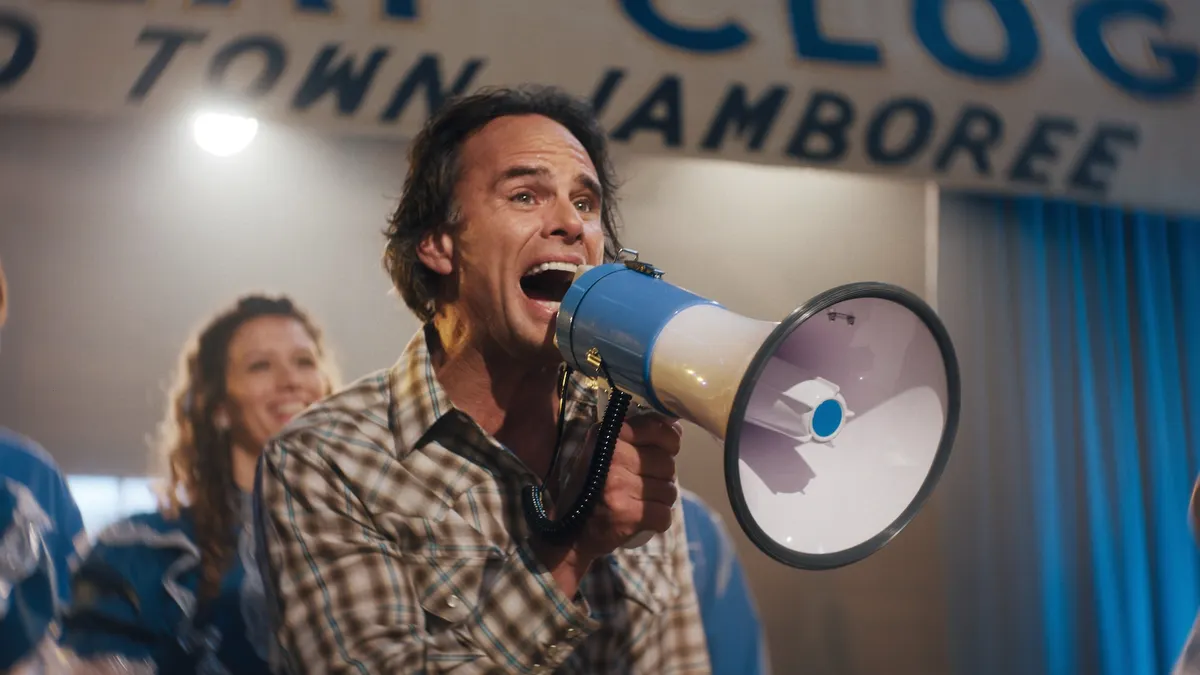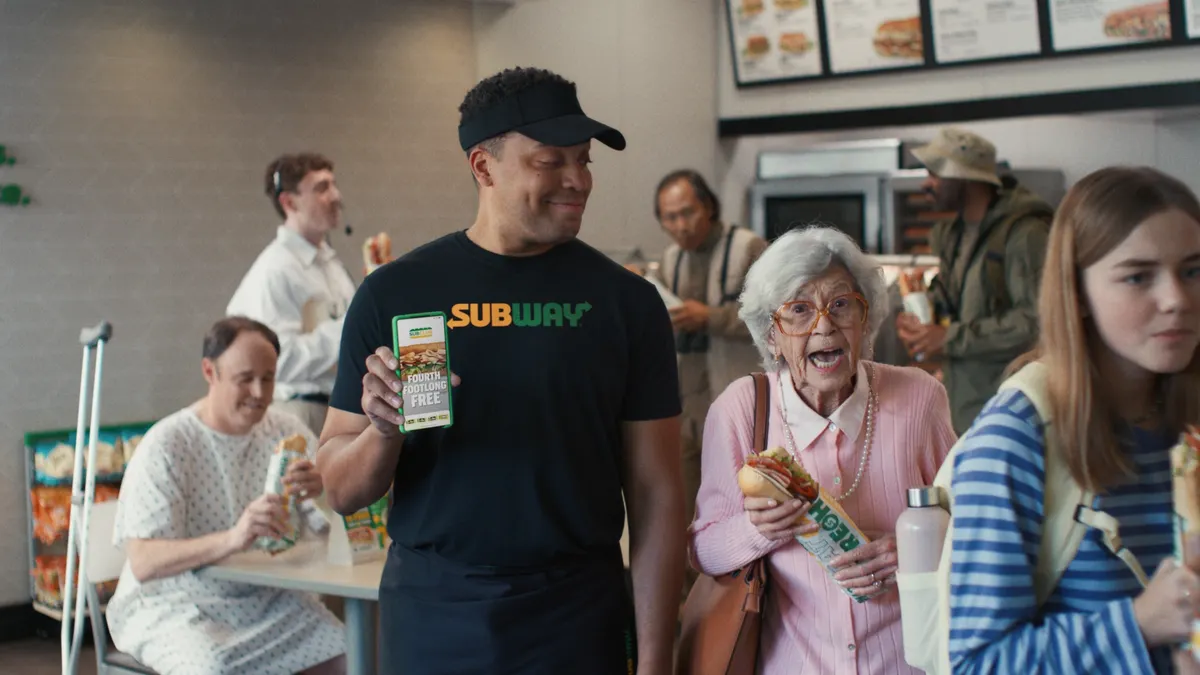During the final two days of the twelfth annual Advertising Week in New York, discussions over advertising’s decidedly mobile future sparked questions about metrics.
In a session about advertising with a consumer-centric approach, Facebook VP of Ad Tech Brian Boland didn’t mince words. Since “mobile broke your marketing tools,” it's harder than ever to measure impact, he said. Boland argued the next wave of marketing needs to be strongly people-based, or consumer-centric.
With Ad Week now over, here is a recap of the biggest developments and debates during the closing half of the conference. For a recap of days one and two, you can read our dispatch here.
Taking a people-based approach to marketing
Seventy-five percent of people using their smartphones spend most of that time on mobile apps — a world that Facebook’s Boland reminds us is cookie free. The nearly 1.5 billion people who use Facebook spend an average 40 minutes per day on the social platform, Boland said. Having access to this massive audience in combination with Facebook’s people-based technology can help bring to light consumer behavior. Brands and publishers working with Facebook can then harness these insights to see tangible results such as conversions and ROI, and reduce waste in terms of unseen ads.
“Not only has mobile created a crisis in cross-device, it's created a cross-everything — browser, app, publisher — dilemma where the user's journey can't be connected or seen,” Boland said. “In an era where we want to deliver meaningful, relevant, great ads, cookies just don't cut it.”
Re: people-based marketing, $FB's Boland: Growing value & real results for businesses actually leads to added value to people #AWXII (2/2)
— Natalia Angulo-Rico (@natisangulorico) September 30, 2015
In the same discussion, Mediavest COO Sarah Kramer shared one of the biggest issues they are addressing is measurement. “We have to rethink standards,” she said.
Being able to understand real consumer behavior will let advertisers understand consumers better and in turn market to them better. In people-based marketing, advertisers are making the consumer central to the advertising process by gleaning insights from data gathered to produce better targeted ads. Putting the consumer first, however, the idea goes, will help balance the data and the creative — using data points to better target, but keeping in mind that behind every data point is a human.
Boland shared two examples of companies who had seen success using Facebook’s ad tech offerings: With the help of Atlas, Tommy Hilfiger was able to see that 13% of sales in a recent campaign were influenced by what happened on people's interactions with the brand on their digital devices, specifically on Facebook. Live Nation, also via Atlas, tied back a 66% increase in sales to exposure on mobile devices.
“We invest in our ad tech business to be able to deliver great experiences for brands and consumers — growing value and real business results for businesses actually leads to added value to people,” Boland said. “We can connect all the way back to in store sales and that's really exciting.”
If people-based marketing is in a sense a new currency for advertisers, Mediavest’s Kramer said, “Consumers have flown quickly to these new behaviors in adopting mobile devices,” but businesses haven't gotten there quite yet. “Our ability to show the proven results in this space is going to be something that gets clients to build confidence and jump in,” she said.
Insta-success
“We only need to see an image for 13 milliseconds to identify it,” according to Instagram Director of Brand Development Daniel Habashi. For marketers on Instagram, those 13 milliseconds are proving to be successful.
Did you know we only need to see an image for 13milliseconds to identify it? @instagram's Daniel Habashi asks #AWXII pic.twitter.com/dAyh5OVfx4
— Natalia Angulo-Rico (@natisangulorico) October 1, 2015
According to Habashi, 63% of millennials come to Instagram to find a brand and 74% take action by researching the brand or even making a purchase after being inspired by a post. The social photo platform, which is owned by Facebook, recently hit 400 million monthly active users. During the session, the brand director also shared that 97% of campaigns on the platform have generated significant lift in ad recall — a 17 point average ad recall lift, which is a 2.8 times higher ad recall than Nielsen norms.
During the same discussion, Keri La Ra, director of global social media and digital compliance at Starwood Hotels & Resorts, shared how earlier this year Starwood introduced a new chain of hotels, Tribute Portfolio, on Instagram. Starwood used the app’s carousel ad option, which lets users swipe on an image to see a couple more.
La Ra said ”the best part of it is that we can learn from it," adding that, “social media, instead of complementary marketing, is now at the forefront [of the advertising process]."
Starwood Hotels' La Ra: Social media rather than being complementary marketing efforts is now @ the forefront #AWXII pic.twitter.com/Cy2J0sR28q
— Natalia Angulo-Rico (@natisangulorico) October 1, 2015
She explained that if people go to Facebook to discover, they come to Instagram to be inspired. “Adding value to your followers is about finding relevant content that speaks to them,” La Ra said. “It’s inviting them to travel.”
In the same session, Progressive Digital Marketing Director Nader Ali-Hassan said the insurance company’s success on Instagram had a lot to do with being able to track metrics and test in real-time.
“For us, it's about being innovative and being first, and the great thing about digital marketing is that we can measure and track if something works,” Ali-Hassan said. It might be cliche to say that being at the right place, at the right time and serving the right content at the moment is "the secret sauce" to successful advertising, he said. However, Ali-Hassan said it's worth noting that mobile is the first platform that truly compliments that strategy.
Good content is going to do both — sell and tell your brand story, Ali-Hassan explained. But the real success lies in being able to measure impact (or lack there of). “We can measure here more than anywhere else and that's the power of Instagram and Facebook,” he said.
.@Progressive's Ali-Hassan: If we interrupt you in your most sacred place (mobile) it has to add value #AWXII #social pic.twitter.com/otctMivy3q
— Natalia Angulo-Rico (@natisangulorico) October 1, 2015
Echoing La Ra's caution that posts should seek to add value to the consumer, Ali-Hassan said, “If I'm going to interrupt you in your most sacred place [mobile], I want to make sure I'm giving you something that's of value.”
What the CMOs are saying
Rounding out Ad Week, Wired put on a panel on Thursday at the Nasdaq featuring five CMOs from tech and media brands. Questions about whether the future will be either mobile-first or mobile-only were simply met with another question: “What won’t be mobile in the future?”
AOL CMO Allie Kline shared a mantra they say in-house: “Expect the unexpected.”
Big takeaway from @WIRED's Connected CMOs #AWXII chat: Marketers need to reimagine, not repurpose in a mobile 1st (maybe mobile only) world.
— Natalia Angulo-Rico (@natisangulorico) October 1, 2015
Still, the mobile conversation wasn’t the most surprising for agency folks sitting in the room. Facebook’s Chief Marketer Gary Briggs made a comment about giving the social network’s in-house creative shop — The Factory — more work to speed up the production process. He also attributed the shift to the increasingly tech heavy and data savvy role the CMO and marketing teams now play.
"Great creative comes from a really tight, specific brief," Briggs said. "We're constantly introducing new apps and new features, and a large amount of time that I spend is in product marketing. So, you want your agency to be tight with the product managers, and you really only get that when they're in the hallway."
For Briggs, he believes there will be a lot more science to marketing than people estimate, hence the need for more internal talent. And he wasn’t the only CMO on the panel to share this sentiment.
Anna Fieler, Popsugar’s EVP of marketing, said that from a publisher’s standpoint, knowledge of data and editorial factored into their decision to launch their internal brand studio. "Through a partner, you're able to borrow an authentic voice to amplify your story in a way that you couldn't otherwise," Fieler said.
Bloomberg’s CMO Deirdre Bigly said: "We have to be so real time that a larger agency just couldn't do it for us, so we decided to actually take all that money that we were using with an outside agency and build it internally.”
AOL CMO Allie Kline added that on the B2B side though, turning to an external agency can be especially helpful. Kline said when talking to B2B clients about how to manage data, “it's like deer in headlights.” There's so much information coming at everyone all the time that if you don't know how to handle it, “it can be very clouding,” she said, and that’s when an external partner can help.
"You're adding more creative fire,” she said.




















